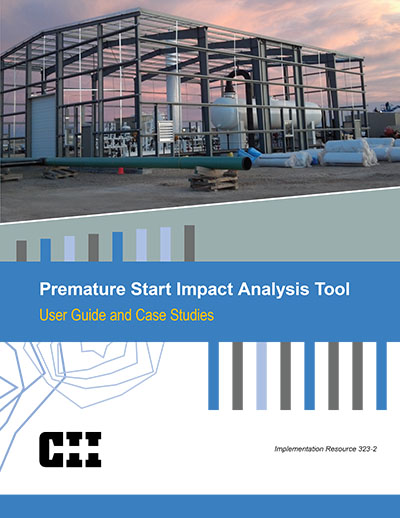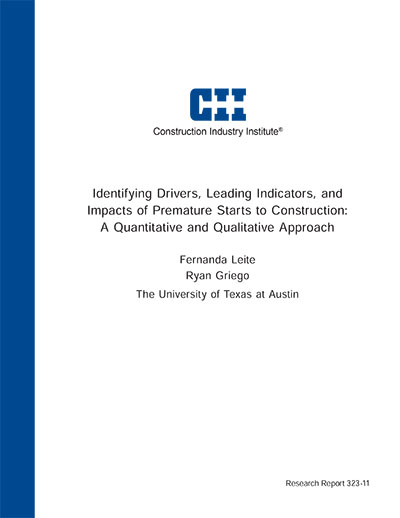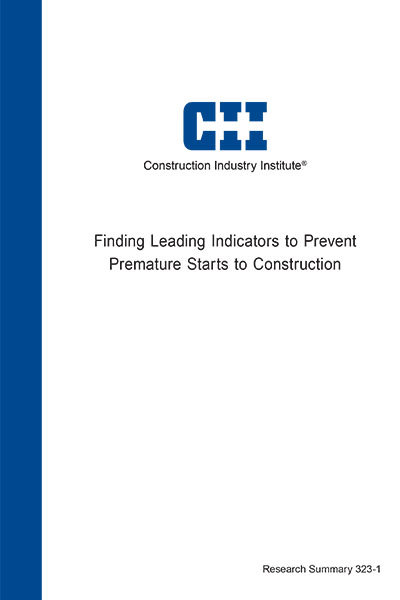
Premature Start Impact Analysis Tool
Publication No
IR323-2
Type
Excel spreadsheet
Publication Date
Nov 01, 2016
Pages
82
Research Team
RT-323
DOCUMENT DETAILS
Abstract
Key Findings
Filters & Tags
Abstract
It was with this need in mind that the Construction Industry Institute (CII) commissioned Research Team 323 (RT-323). In order to develop a basis of analysis, RT-323 defined a premature start as a decision, by at least one party, to start construction with at least one risk that exceeds an acceptable tolerance to a party and which can result in an interruption to construction. The main objective of RT-323 was to identify and document the drivers and impacts of premature starts to construction, and to identify the leading indicators that signal a premature start.
Key Findings
The case studies vary in project scope, schedule, and budget. Project definition for these case studies include projects related to infrastructure development, government funded renovations, and oil and gas midstream facilities. Average baseline project cost for these case studies range from $208 million to $2.4 million (average: $64.2 million; median: $44.2 million).
(IR323-2, Appendix B, p. 37)
(IR323-2, Appendix B, p. 37)
RT-323 developed the PSIA tool to help industry professionals make informed decisions aboutstarting construction on a major project and how to identify risks associated with premature starts. The tool makes it easy to specify a small set of inputs and automatically generates a detailed report based on survey data, categories, definitions, and case studies compiled and qualified by the research team.
(IR323-2, p. 9)
(IR323-2, p. 9)
IR323-2, Premature Start Impact Analysis Tool: User Guide and Case Studies
This tool guides the user toward material and data compiled by RT-323, including:
This tool guides the user toward material and data compiled by RT-323, including:
- Drivers, leading indicators and impacts of premature starts to construction
- In-depth case studies of projects with premature starts
- PSIA tool, user guide, deployment recommendations, and example applications
Filters & Tags
Knowledge Area
Project Phase
Project Function
Industry Group
Research Topic
Finding Leading Indicators to Prevent Premature Starts, and Assuring Uninterrupted Construction
Keywords
Premature starts to construction,
Leading indicators of premature starts,
Drivers of premature starts,
Impacts of premature starts,
PSIA,
rt323



